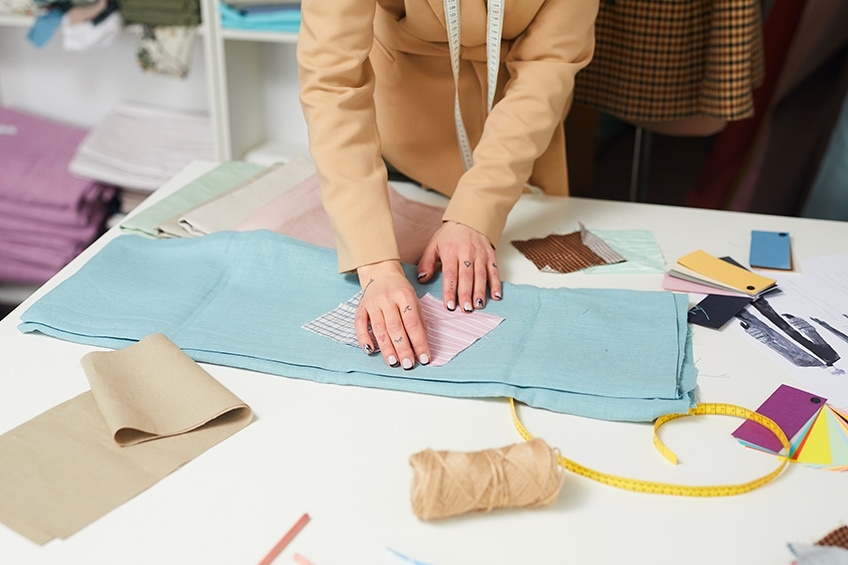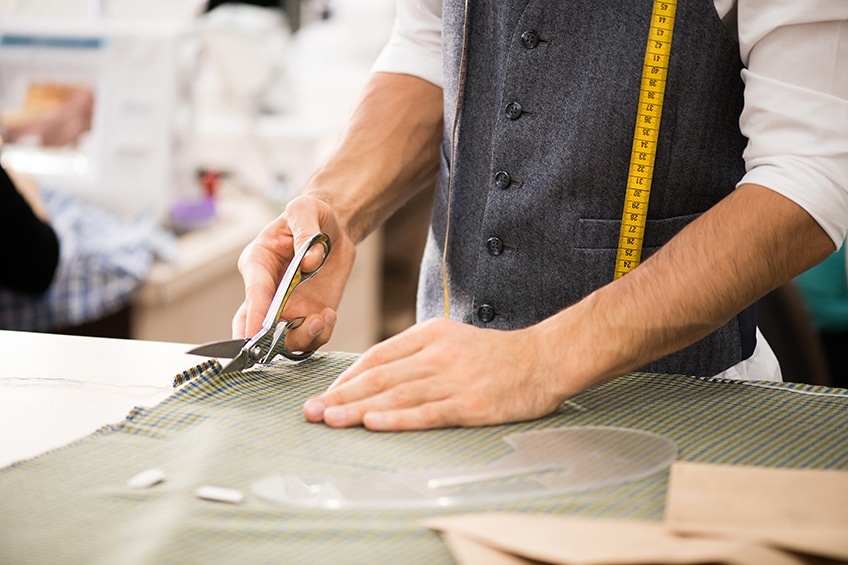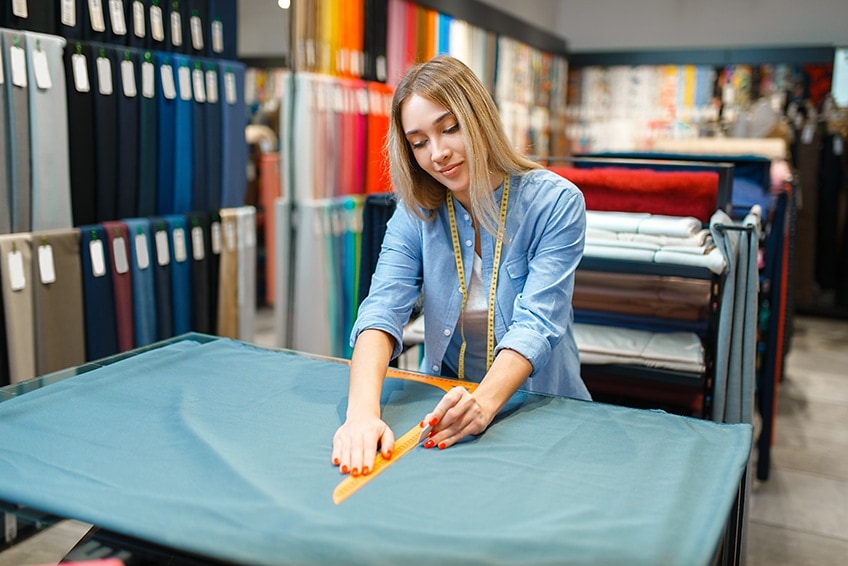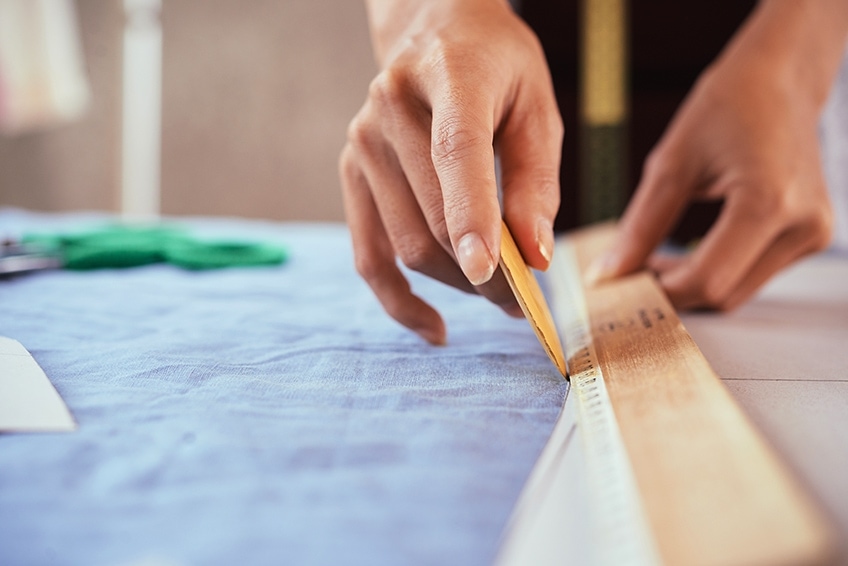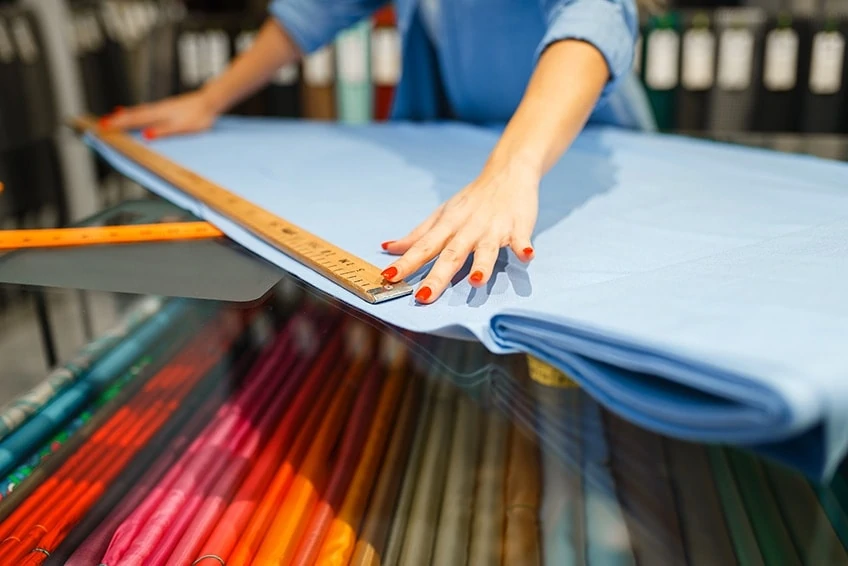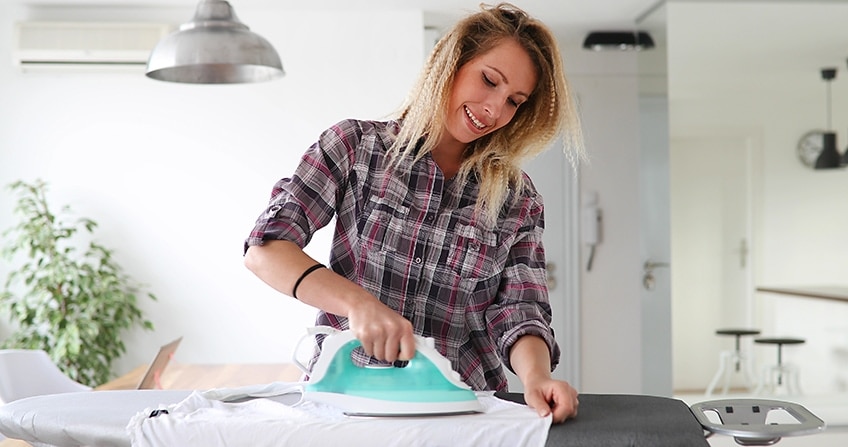Best Fabric Glue – Complete Guide for Fabric Adhesives
This post may contain affiliate links. We may earn a small commission from purchases made through them, at no additional cost to you. You help to support resin-expert.com
Fabric adhesives, also called textile adhesives, offer the user many advantages from which sewing beginners in particular can benefit. Attaching appliqués or even small buttons is as simple as it is safe. In our textile adhesive test, we show you what you have to pay attention to when gluing fabrics and which fabric adhesive is the best.
Table of Contents
Why Glue Fabric Instead of Sewing?
Gluing instead of sewing can have many advantages. If you are not quite as skilled at sewing but would like to tackle DIY projects with fabrics, textile glue is probably just the thing for you. It is easy to use, even in difficult places, and bonds not only fabrics but also other materials together with high strength.
For example, you can also glue fabric to wood – ideal for many decorative ideas. Furthermore, textile adhesive does not apply. Thick, bulging seams are a thing of the past.
In addition, fabric gluing saves time. You don’t have to purchase different colored yarns and adjust each one individually to the fabrics. Textile adhesive holds the substrates together inconspicuously, without any visible seams.
Another aspect could be important for fabric bonding: Waterproof fabrics are perforated by a seam so that in the worst case, water can penetrate. This cannot happen with gluing – the fabric remains completely sealed.
Smaller appliqués and decorative tapes can also be applied quickly, easily and without a disturbing seam using fabric adhesive. This type of DIY is often a good alternative, especially for sewing beginners. The textile adhesive also proves its worth during repairs.
It is often difficult to patch a hole in the trouser leg – the trouser leg has to be torn open on one side so that you can get to the hole and attach the patch. With a fabric adhesive this is no problem. Just stick on the patch. It is not necessary to open a seam. This saves you time and nerves.
Which Fabric Types Can Be Glued with Fabric Glue?
The special feature of fabric adhesive is that it was developed especially for absorbent materials. These are not easy to glue, as the glue often seeps into them. However, textile adhesive has the property of being able to bond together absorbent textiles. These include jeans fabrics, viscose and linen as well as jersey and cotton.
Jersey in particular is not a particularly beginner-friendly fabric that slips or warps quickly when sewn, as it is very smooth and stretchy. With a good textile adhesive, however, jersey can be joined optimally and without difficulty. Please note that the textile adhesive used must remain flexible when applied to jersey after the curing phase.
Care should be taken with fabrics such as leather, which have a firmer consistency. Special Leather adhesives are available for these.
Pros and Cons of Textile Adhesives
It is difficult to list the advantages of all fabric adhesives per se, as there is a great variety of them. However, they have some positive characteristics in common:
- As a rule, they have been designed for all fabrics and textiles and bond them securely and permanently; leather is an exception
- They create a highly inconspicuous adhesive seam, as they cure transparently
- They are heat-resistant, so that not only washing at 90° Celsius but also ironing is no problem
- Textile adhesives are waterproof, so that the adhesive seam is not damaged even by many washings wird
- Dry cleaning is usually also possible without problems
- The application is often easier than sewing fabric or appliqués, especially for sewing beginners
The automation of the gluing process is of particular interest to the industry. In addition, adhesive seams are highly inconspicuous and hardly apply at all, making them ideal not only for clothing but also for other industrially used textiles.
In the medical field, it is important that glued seams cause no or less pressure points than those that have been sutured. This is one of the reasons why fabric adhesives are of great importance in the medical industry today.
We could not find any major Cons in textile adhesives as a whole. In some cases, the adhesive seam has to be renewed after many washes because it dissolves easily. However, this is a problem that rarely occurs and can be quickly remedied.
An Overview of the Different Types of Fabric Adhesives
In the following table we would like to give you an overview of the different types of fabric adhesives.
| Adhesive Type | Features |
| Liquid Adhesives | Spray adhesives in tubes are easy to use and can be applied with pinpoint accuracy if smaller bondings are to be made. They often have a very fine dispensing tip and are therefore perfect for small buttons and applications. However, this property makes them less suitable for area bonding, unless you use a spatula for application. The adhesive strength is very high, but the curing phase is also longer than with other textile adhesives. |
| Spray Glue | Spray adhesive is easy to use and is particularly suitable for bonding large areas. However, it is less suitable for smaller surfaces. Its adhesive strength is rather mediocre. It only needs a relatively short time to harden, but it can happen that the bonded textiles come off after several washes. The gluing process can then be repeated quickly and easily. |
| Adhesive Tape | Adhesive tape is certainly one of the simplest variants if you want to stick fabric on fabric. It is especially suitable for narrow and straight areas, for example for seams. The advantage of adhesive tape for textiles is that it can be removed quite easily. However, it also has a disadvantage: The glued areas are not as durable as those that have been fixed with liquid glue or spray glue. |
| Glue Stick | The glue stick is easy to use and can be used for both small and medium-sized surfaces. However, its adhesive strength is rather low to medium, so it should rather be used for temporary fixation. |
| Adhesive Powder | The adhesive powder for textiles is probably the most modern variant. The powder is applied to the surfaces to be bonded and, covered by a cloth, ironed. This creates a highly durable and inconspicuous adhesive seam. However, the adhesive powder is not suitable for very small areas, because the powder likes to spread over a larger area. Then, of course, clean gluing becomes more difficult. |
Which fabric adhesive is suitable therefore depends strongly on the respective application. We have carried out a comprehensive fabric adhesive test and would like to introduce you to various adhesives that can be used for different projects.
Recommendation for Small Repairs: BEACON FabriTac Glue
The Beacon Textile Special Adhesive is perfect for the smallest of repairs. If you need to close a crack in a sofa or patch a ripped seam in a T-shirt, Beacon textile glue is the perfect guarantee for success. It comes in a practical small tube with a fine dosing tip for optimal application of the adhesive. But that is not the only advantage this textile adhesive offers you:
PROS
- The price is practically unbeatable, especially if you consider that you can repair most textiles with the adhesive; this also applies to higher-priced fabrics
- The textile adhesive is resistant to washing and cleaning
- This results in a durable and very secure bond
- The fabric adhesive is fast setting and therefore does not leave any unsightly streaks on the outside of the glued fabrics
- It is suitable for many different textiles, such as blended fabrics, cotton and linen
- It is non-toxic
CONS
- Depending on the textiles to be bonded, the curing phase can be very long; it can last up to 24 hours
Since we only noticed this one disadvantage, we can give an unqualified recommendation for the BEACON FabriTac glue.
- This adhesives won’t soak into fabrics and is much easier to use than a glue gun
Recommended for Larger Areas: 3M Super 77 Spray Glue
The 3M Super 77 spray adhesive is suitable for particularly large areas. It is easy and practical to apply and there is no unintentional leakage of the adhesive from the adhesive seam. If you want to glue fabric on fabric and avoid unattractive streaks, 3M Super 77 spray glue should be your first choice. But it also offers other positive properties:
PROS
- The 3M Super 77 spray adhesive is not only suitable for fabrics of all kinds, but also for many other materials such as metal, glass, wood, ceramics and various plastics
- The glue can has a special nozzle with which three different spray levels can be set
- Even the bonding of uneven surfaces is no problem with this spray adhesive
- The adhesive is temperature resistant between -20° and +60° Celsius – but why this can be a disadvantage is explained below
CONS
- The price is of course proud if you buy the can of spray glue; however, we would like to evaluate this disadvantage only half, since the good qualities always make up for the price
- The temperature resistance is sufficient for most applications, but if you want to bond textiles that are to be washed at +90° Celsius, you should use a different adhesive; for the same reason, this spray adhesive is not suitable for automotive interior trim
All in all the 3M spray glue offers a very good quality and can therefore be recommended by us without a bad conscience.
- Bonds a wide range of lightweight materials (i.e., paper, cardboard fabric, insulation, plastic, metal, wood, felt, fiberglass, foam, leather, and more)
- Provides professional, industrial strength for demanding applications
- Offers a fast, aggressive tack for a quick bond that reduces set time
- Allows for a bond time of 15 seconds to 30 minutes
The New Alternative: Fusible Bonding Agent to Iron
The sewing powder from Bo-Nash is a plastic granulate with which different fabrics can be joined together in a stable and durable way. It is suitable for attaching decorative seams and appliqués as well as for repairing sofa covers, cushions, clothing, bags and other textiles. We have also noticed the following Pros:
PROS
- The plastic granulate is tear-resistant and very stable when cured
- It is not only machine washable, but also dry-cleanable and even boilable; therefore it can also be used for textiles washed above 60° Celsius
- The sewing flash is supplied in a practical resealable can, which makes the product very long-lasting; furthermore, it cannot dry out, since the textile adhesive is supplied in granule form
- The application is very simple: After sprinkling and applying the second fabric, the textile adhesive is simply ironed over
- After ironing, the granules become transparent and form a highly unobtrusive bond
CONS
- It is quite expensive, which is however – as with spray glue – compensated by the fact that many different textiles can be joined together or even repaired
- Although the granules are supplied in a shaker can, it is not so easy to apply them precisely; therefore, a little granulate often goes wrong. Here one must be careful not to glue textiles together that are not to be joined at all
We can also make a recommendation for the plastic granulate from Bo-Nash with a clear conscience, especially if larger surfaces are to be glued.
- Place the powder on the desired spot, iron it and you're done
- Fabric stays soft and can be sewn through
- Bonds fabric together instantly
Instructions for the Application of Textile Adhesives
Applying a textile adhesive is a child’s play if you know how. First of all, prepare the materials you need. In our instructions, we start from the repair of a pair of trousers with a hole in the knee. You need:
- A textile adhesive
- A patch
- A wooden spatula
- An iron and an ironing board
Apply the Fabric Adhesive
The trousers are now placed on the work area and the fabric is smoothed. Around the area to be repaired, the fabric adhesive is applied with the help of the wooden spatula. Take care not to apply the fabric adhesive too thickly, otherwise it will swell out at the sides.
Apply the Patch with Textile Adhesive
Now place the patch on the corresponding area and smooth it down. Pay attention to possible wrinkles and, if necessary, smooth them out towards the edge. Any leaked textile adhesive is immediately carefully picked up with a spatula and a damp cloth. Also, make sure that no glue gets into the hole of the trouser leg, otherwise, the patch will be glued to the back of the trousers and the trouser leg will be closed this way.
Observe Drying Time
Textile adhesive usually takes up to thirty minutes to harden. Please refer to the package insert for details. Once the textile adhesive has become transparent, it can be further processed.
Iron the Textile Adhesive
If the adhesive seam is transparent, it can be ironed to make it durable. Place the trousers on the ironing board and use the cotton setting on your iron for non-sensitive fabrics. Now iron the corresponding area by holding the iron on it for several seconds. For more delicate fabrics, select the appropriate setting.
Ironing makes the textile adhesive more durable and you will enjoy the repaired garment longer. Now it can also be washed at higher temperatures – depending on the manufacturer’s data sheet – and withstands rough handling, for example by playing children.
Textile adhesives offer the user many Pros and only a few Cons. The application as well as the repair of damaged garments becomes really easy with the right textile adhesive.


